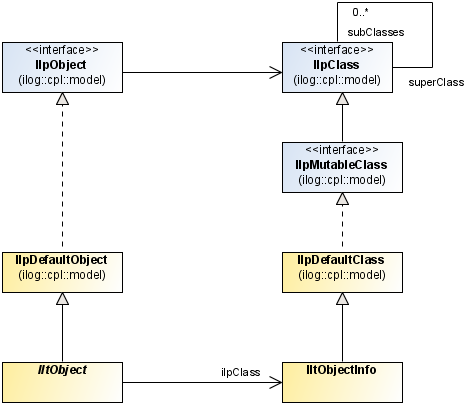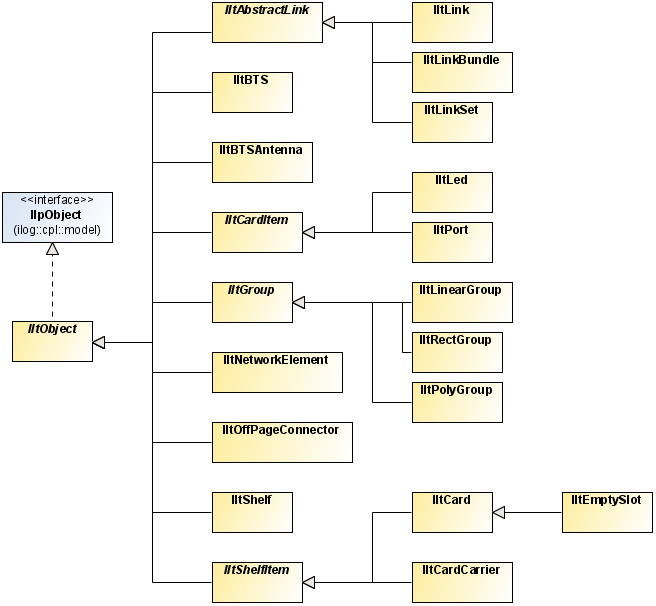Predefined business objects include
telecommunication network managed objects such as:
- Network elements of the class IltNetworkElement
- Links of the class IltLink
- Groups of links of the classes IltLinkBundle, IltLinkSet
- Groups of the class IltGroup
- Dedicated wireless representations of BTS and antennas of the classes IltBTS and IltBTSAntenna
- Off-page connectors of the class IltOffPageConnector
Inheritance tree of predefined business
classes provides the complete hierarchy for business object
classes. For a detailed description of each of these object
classes, see the subsequent sections in this documentation.
Predefined business object classes are subclasses of IltObject, which is itself a subclass of IlpDefaultObject. For each class deriving
from
IltObject
, there is an instance of IltObjectInfo that is a subclass of IlpDefaultClass.
The following diagram shows the relationship
between these classes.

IltObject inheritance path
The following figure shows the inheritance
tree of predefined business classes.

Inheritance tree of predefined business
classes
All predefined business object classes can be retrieved using the
method
GetIlpClass
, which is declared in each one of these classes; for example, GetIlpClass. Every business class contains
specific attributes that you can set using their particular API,
for example,
IltNetworkElement.setFamily(value)
, or the generic IlpObject API, for example,
setAttributeValue(IltNetworkElement.FamilyAttribute,value)
. See Business model API.
Instances of predefined business classes
hold two types of data: structural data and states and alarms.
- Structural data remains constant while the application is running. It includes:
- Characteristics of the element (for example, its name, Toronto-C10).
- The key properties of the element that have an impact on its own representation, regardless of its states or alarms. The network element function and family (such as, ATM, OC192) are examples of structural data that can be displayed permanently.
- State and alarm data describes the most recently known or inferred state of the managed object. A state can have several different aspects that depend on the type of network management used. For example, in the OSI state system, there are three categories of states: operational states, usage states, and administrative states. On top of these values, a set of statuses can further qualify the managed object. In other standards, such as Bellcore, all states are either primary or secondary states.For an introduction to state and alarm visuals, refer to States.